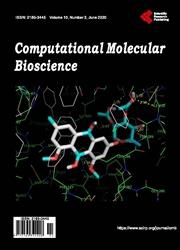Bacterial Heavy Metal Resistance Genes and Bioremediation Potential
引用次数: 15
Abstract
There is a worldwide distribution of heavy metal pollution that can be managed with a bioremediation approach using microorganisms. Several bacterial species belonging to the Proteobacteria have been shown to tolerate heavy metal stress, including toxic salts of noblemetals. Rhodobacter sphaeroides, a model bacterium has previously been utilized for bioremediation studies. A bioinformatics approach was employed here to identify the distribution of genes associated with heavy metal tolerance among the sequenced bacterial genomes currently available on the NCBI database. The distribution of these genes among different groups of bacteria and the Cluster of Orthologous Groups (COGs) were further characterized. A total of 170,000 heavy metal related genes were identified across all bacterial species, with a majority of the genes found in Proteobacteria (46%) and Terrabacteria (39%). Analysis of COGs revealed that the majority of heavy metal related genes belong to metabolism (COG 3), including ionic transport, amino acid biosynthesis, and energy production.细菌重金属抗性基因及其生物修复潜力
重金属污染在世界范围内分布广泛,可以通过使用微生物的生物修复方法进行管理。变形杆菌属的几种细菌已被证明能耐受重金属胁迫,包括有毒的贵金属盐。球形红细菌是一种模式细菌,以前曾被用于生物修复研究。本文采用生物信息学方法来鉴定目前NCBI数据库中已测序的细菌基因组中与重金属耐受性相关的基因的分布。进一步表征了这些基因在不同细菌群和同源群簇(COG)中的分布。在所有细菌物种中,共鉴定出170000个重金属相关基因,其中大多数基因在变形杆菌属(46%)和地细菌属(39%)中发现。对COGs的分析表明,大多数重金属相关基因属于代谢(COG3),包括离子转运、氨基酸生物合成和能量产生。
本文章由计算机程序翻译,如有差异,请以英文原文为准。
求助全文
约1分钟内获得全文
求助全文

 求助内容:
求助内容: 应助结果提醒方式:
应助结果提醒方式:


